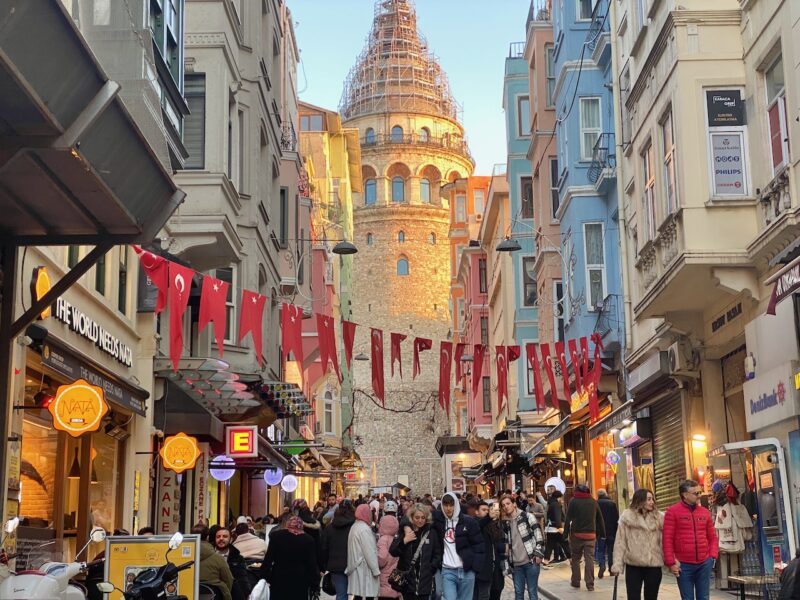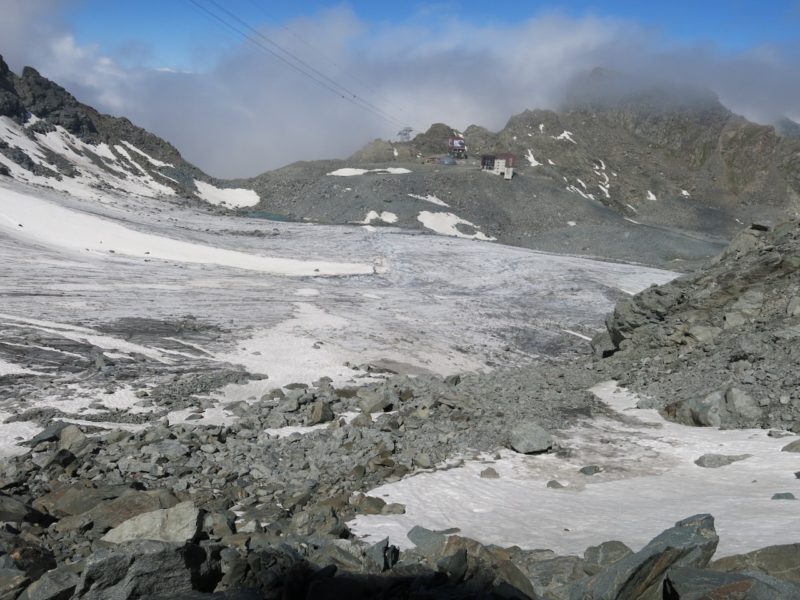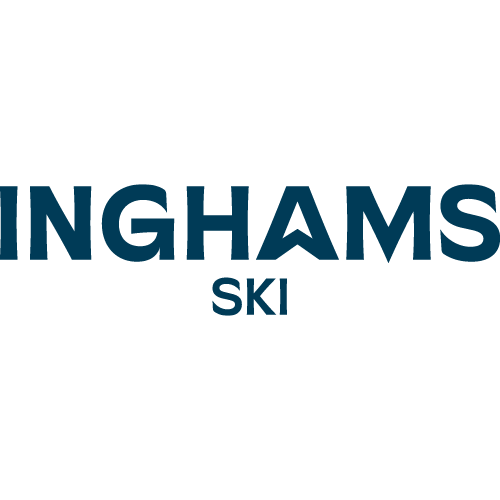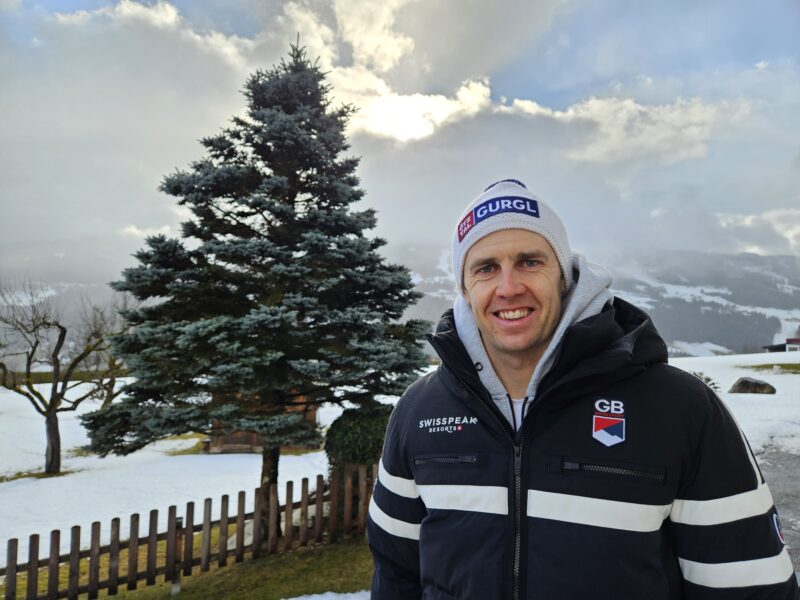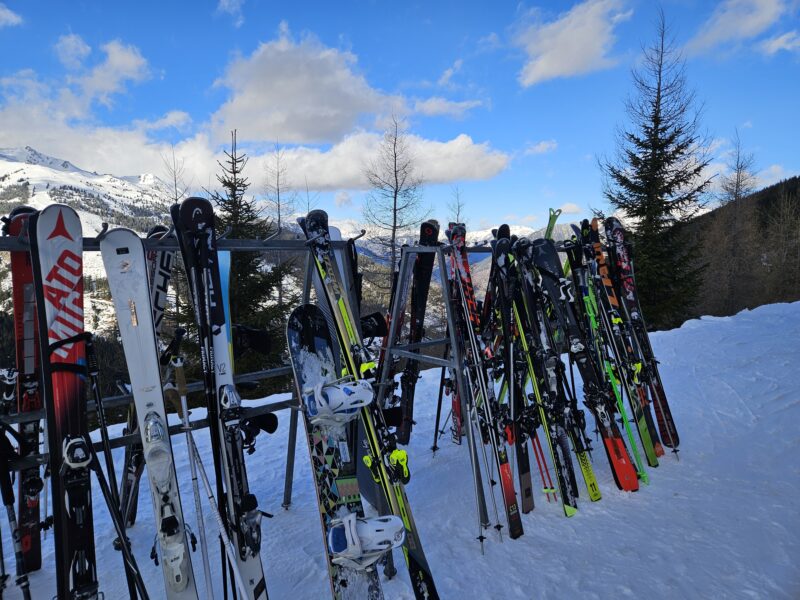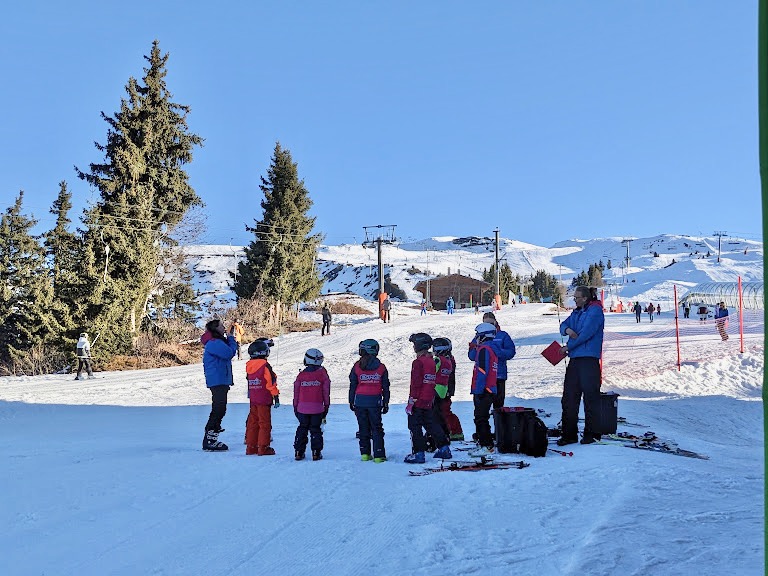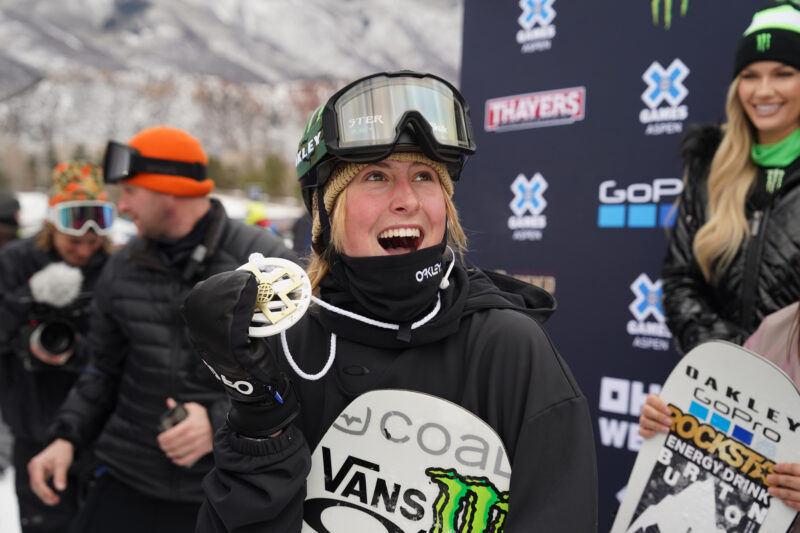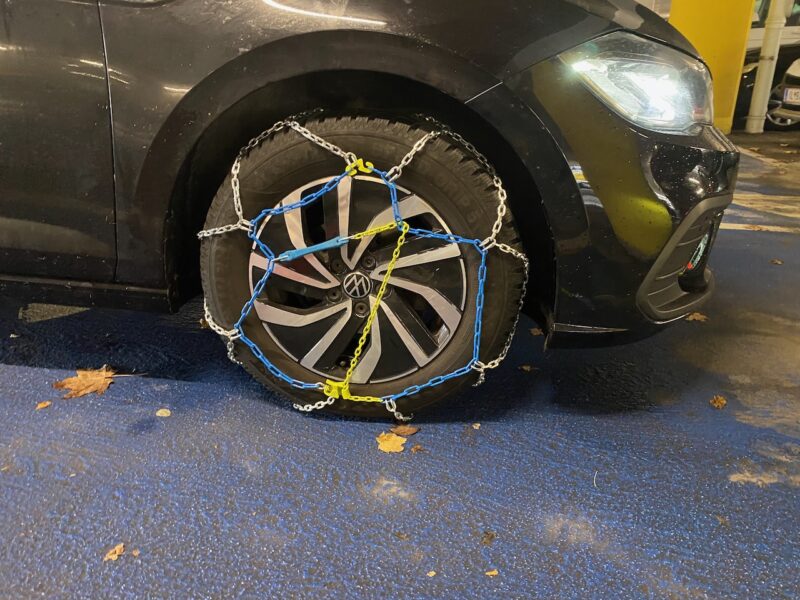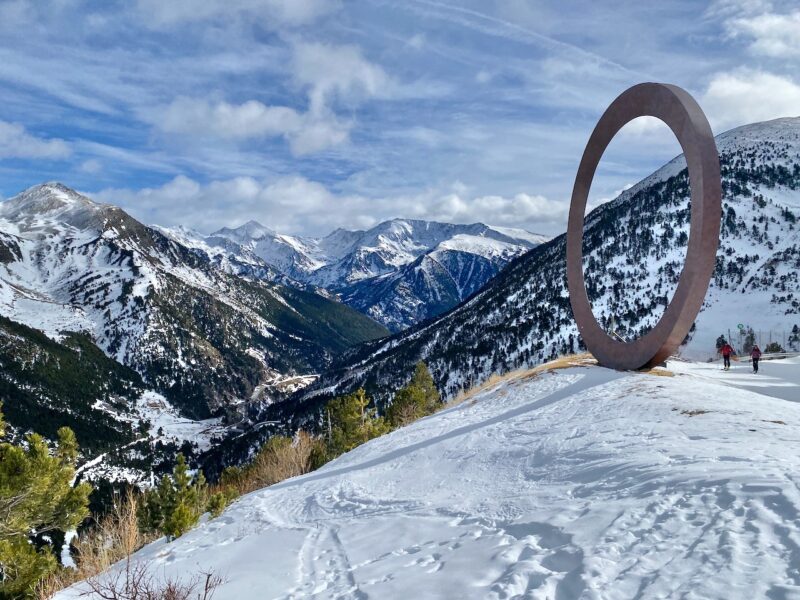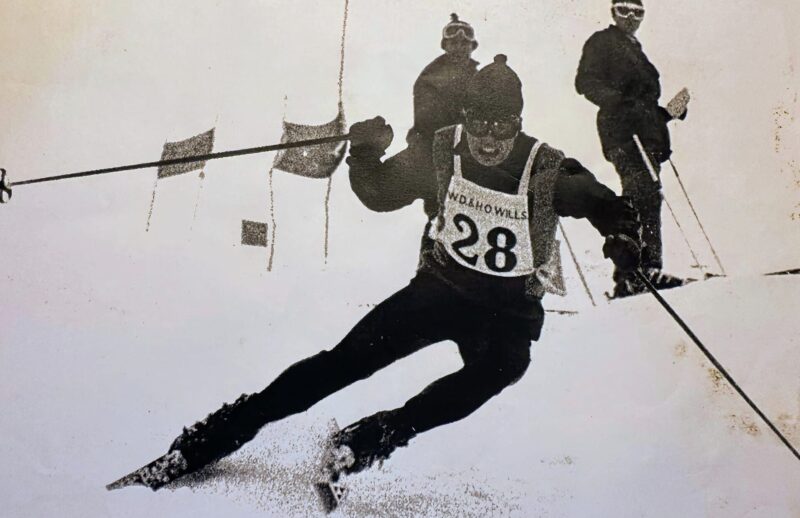Driving to the Alps for Skiing & Snowboarding
11th January 2023 | James Cove, PlanetSKI editor.
Last modified on February 16th, 2023
More people are driving to the Alps – it can be cheaper & more environmentally friendly than flying, plus there’s a host of other reasons. PlanetSKI has just driven to Verbier + we have reaction from readers who also like to drive.
This week PlanetSKI is in Verbier, next week it’s Chamonix & Les3Vallees and the following week La Clusaz.
Having a car is the easiest way to get round the resorts out in the mountains, but our editor, James Cove, thinks it’s also one of the best ways to get to the Alps too if the circumstances are right.
He has written this article for people who are thinking of driving, but have never taken the plunge – hence the detail.
We hope it is helpful.
Update: There has been plenty of reaction to this article on the PlanetSKI Facebook page with dozens and dozens of comments as readers share their own experiences.
We reproduce some of them at the end of this article.
The Crossing Itself
I normally turn up at the Channel Tunnel in Folkestone about half an hour before my crossing.
The instruction now is to arrive at least an hour before departure.
Probably something to do with the passport checks to enter France necessitated by Brexit.
I compromised and arrived at 9.45 for my 10.30 crossing on Tuesday morning.
There were few vehicles around and I was issued a ticket for the 10.20.
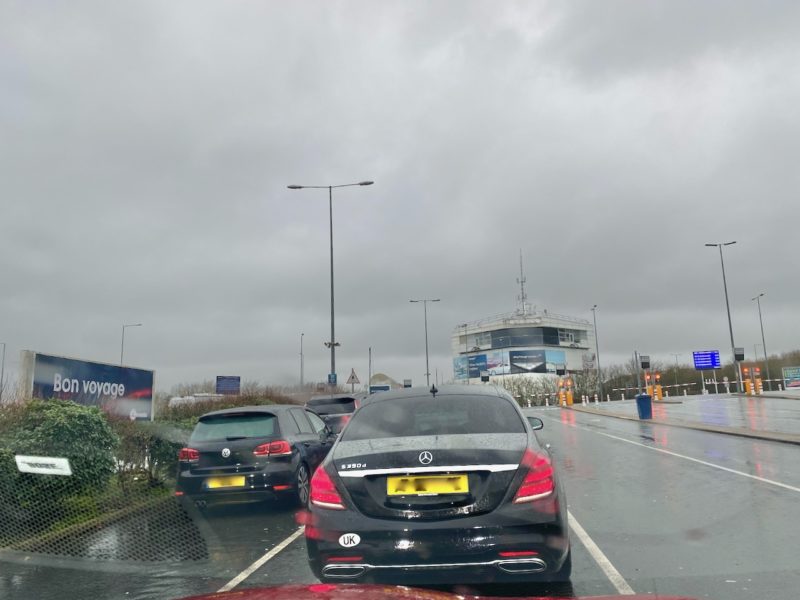
Driving to the Alps. Image © PlanetSKI
The train pulled out at 10.17 after boarding was complete.
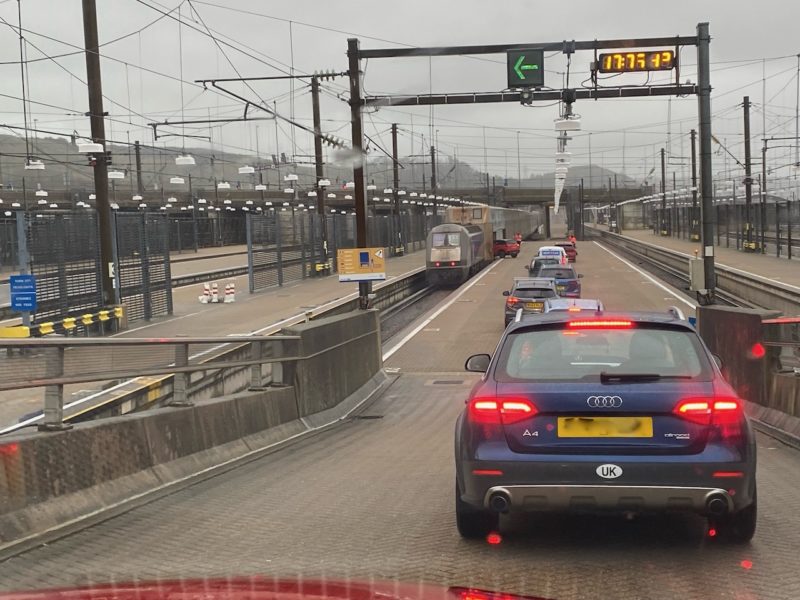
Driving to the Alps. Image © PlanetSKI
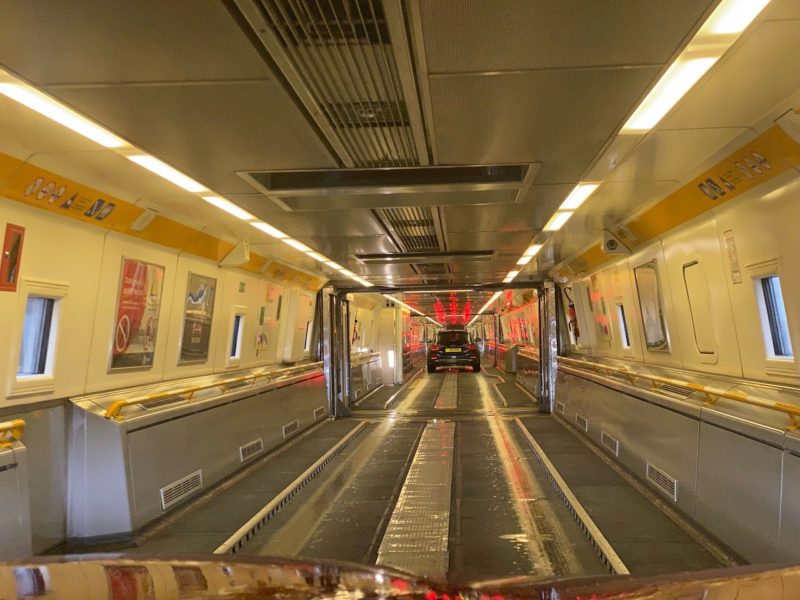
Driving to the Alps. Image © PlanetSKI
35-minutes later the train came to a stop in Calais.
47-seconds later, at 11.50 local time, I was driving off.
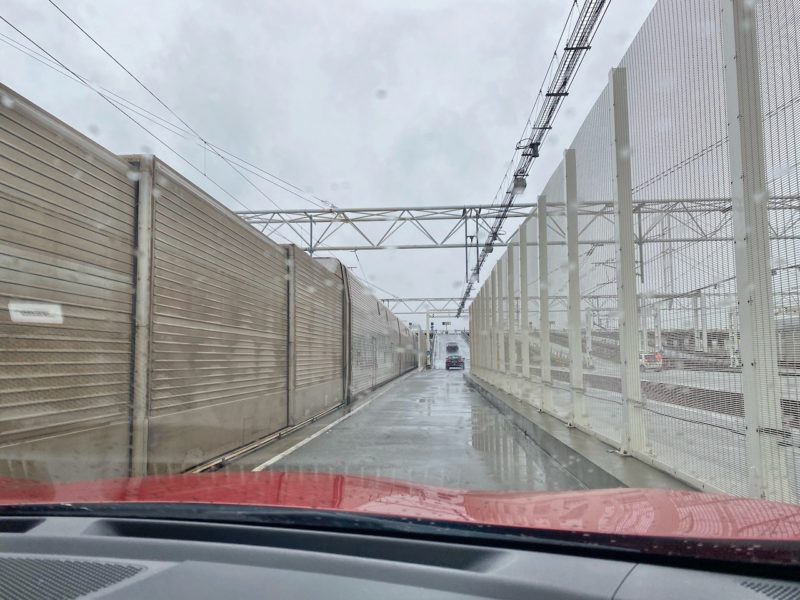
Driving to the Alps. Image © PlanetSKI
It really is that simple and my solo road trip through France was underway.
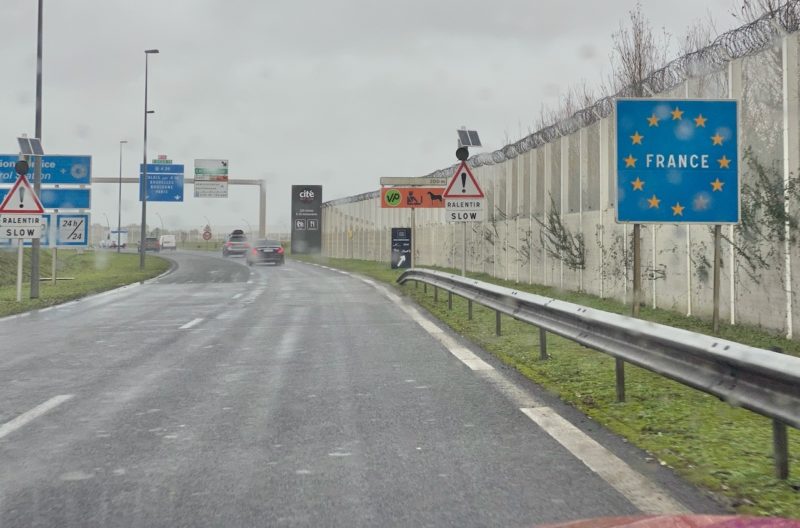
Driving to the Alps. Image © PlanetSKI
Driving is becoming increasingly popular.
“We have seen a large increase in the number of clients driving or taking the train to The Alps, certainly around the peak weeks, with for example 75% of our February half term clients deciding to take the car,” said Paul Hansgate from the tailor made sport holiday specialists, Hanski+.
“When we talk to our clients about this they mention the high cost of flights but also the need to reduce their carbon footprint, which is a really encouraging sign,” Paul added.
Compared to What Can be the Current Flying Experience
On a ski trip last month from Gatwick airport I spent 6-hours at the airport before my flight to Geneva finally took off.
2-hours of it was sitting on the plane.
The rest was in a somewhat crowded departure lounge.
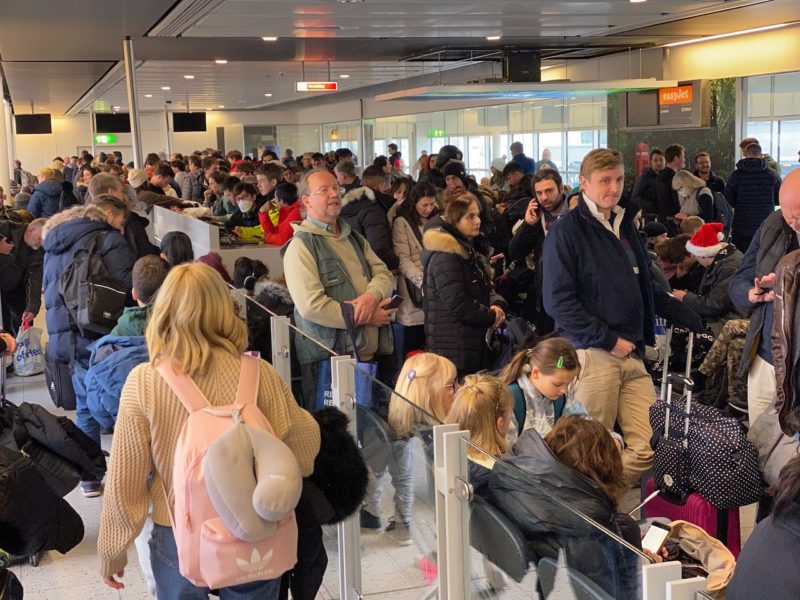
Gatwick airport. Image © PlanetSKI
On the way back through Geneva airport there was a one-hour wait just to get to security.
Previously there had been the standard easyJet queue snaking its way slowly to its Geneva check-in.
Oh, and the plane was delayed by 45-minutes anyway so we needn’t have got so stressed in the queue.
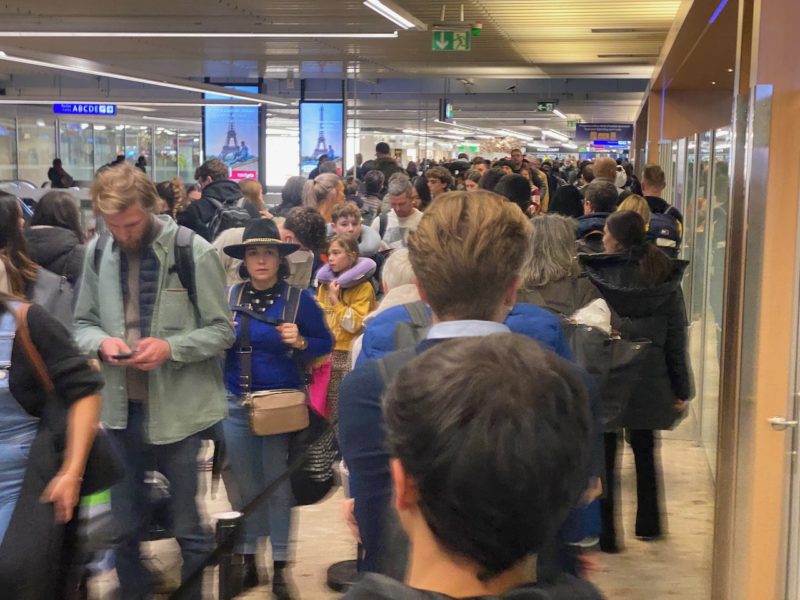
Geneva airport. Image © PlanetSKI
The Drive Itself
Driving is positively relaxing and stress-free by comparison.
However ahead lay the long, long drive to the Alps.
There is no point in pretending the drive is all fun.
Well, not the start anyway.
Especially in the rain.
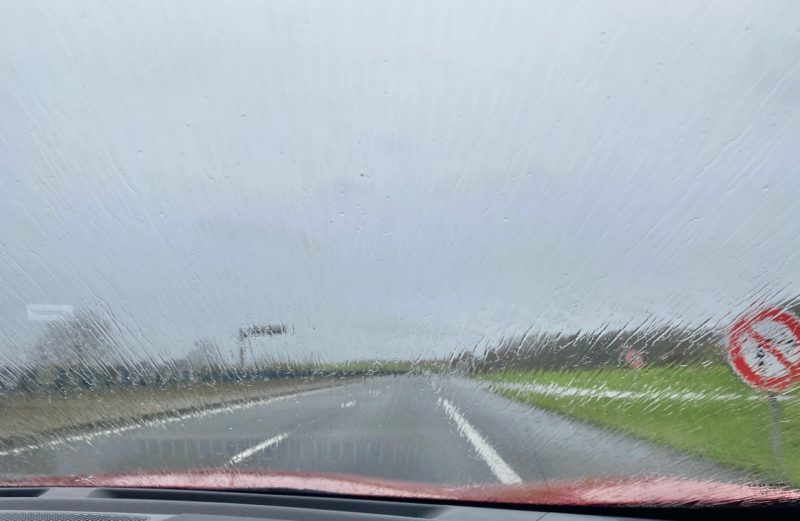
Driving to the Alps. Image © PlanetSKI
The first section in northern France is long and tedious, but I just turn the music on and let my thoughts drift.
I think of more pleasant ski road trips I have had – ones in North America where a 10-hour drive between resorts is not out of the ordinary.
Long road journeys to go skiing are a state of mind I tell myself as my thoughts drift to past ones.
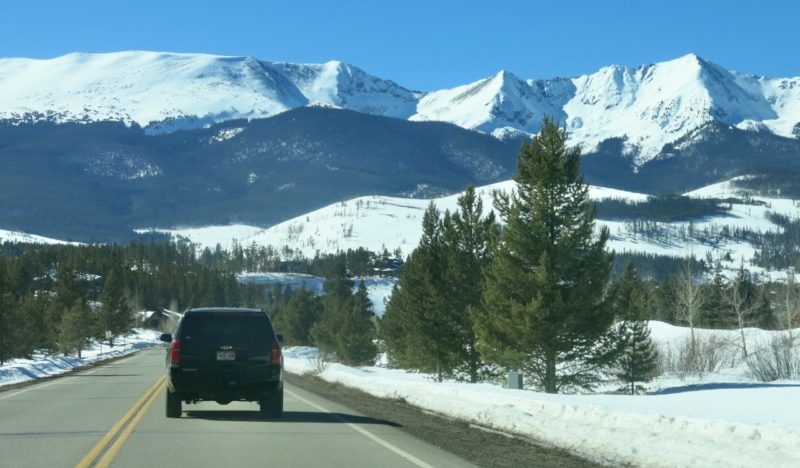
Colorado, USA, ski road trip. Image © PlanetSKI
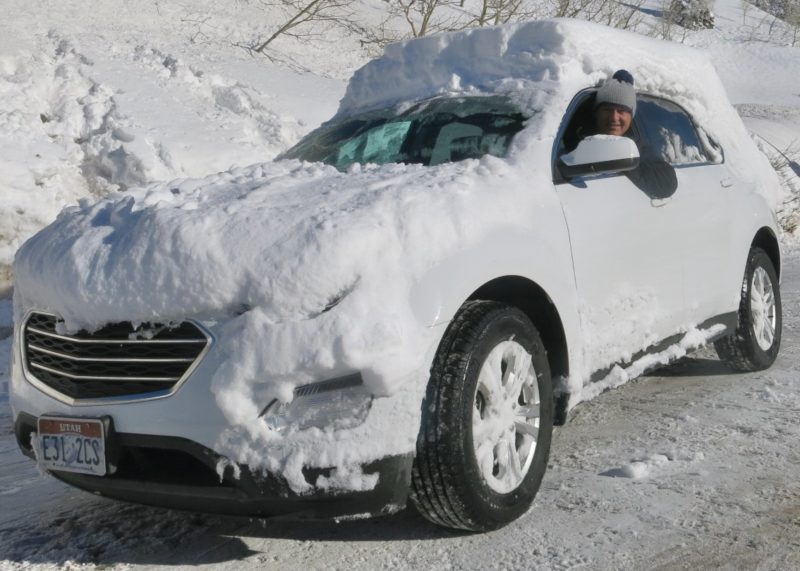
Utah, USA, ski road trip. Image © PlanetSKI
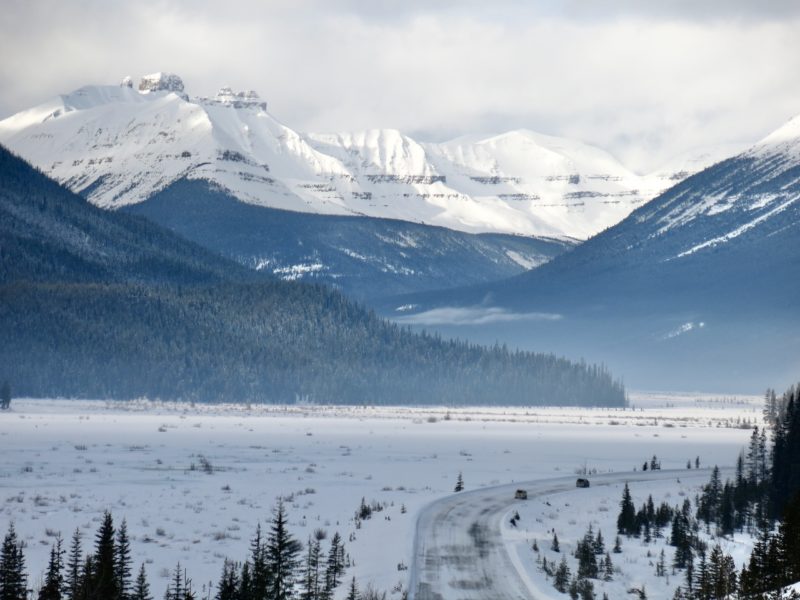
Alberta, Canada, ski road trip. Image © PlanetSKI
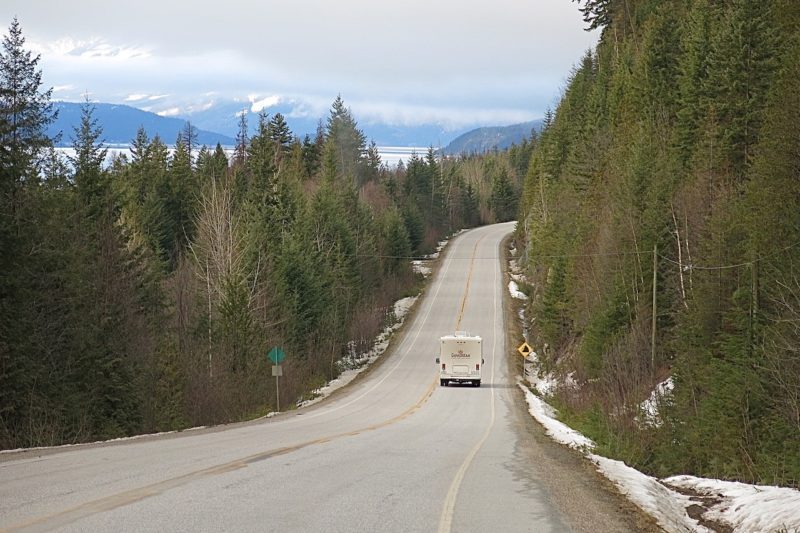
British Columbia, Canada, ski road trip. Image © PlanetSKI
I can handle 8-hours to the Alps.
To begin with the hours go by slowly, but once Reims has been reached after 275 kms (171 miles) and about 2 and half hours the journey changes.
The tedious bit is done, my thoughts turn to the mountains, the skiing ahead and the miles just slide by under the car.
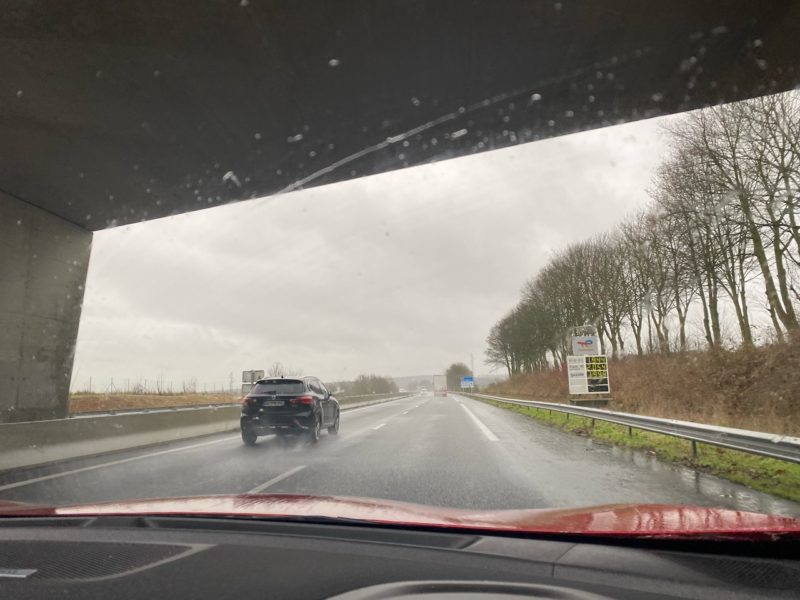
Driving to the Alps. Image © PlanetSKI
What You Can Take
This time I am on my own but it is three pairs of skis in the back, ski boots and avalanche safety kit.
I have one suitcase for ski gear and the other for clothes.
My shirts & T-shirts are hanging up rather than being scrunched up into a 15kg suitcase.
My wife is flying out in a few days to join me and I have brought all her bags too.
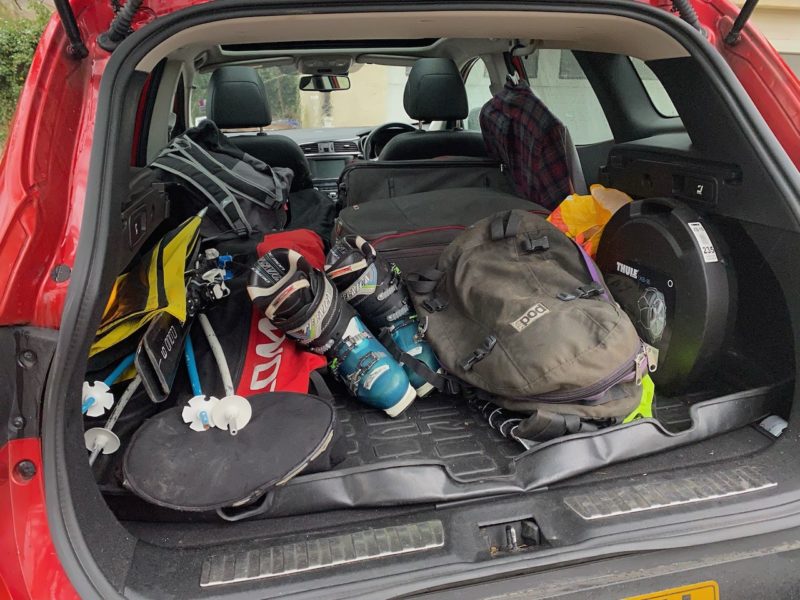
Driving to the Alps. Image © PlanetSKI
Useful Tip No1
I have done this road journey to the Alps many, many times and the first of my tips for anyone that asks me is – fill up with fuel at the first service station after Reims.
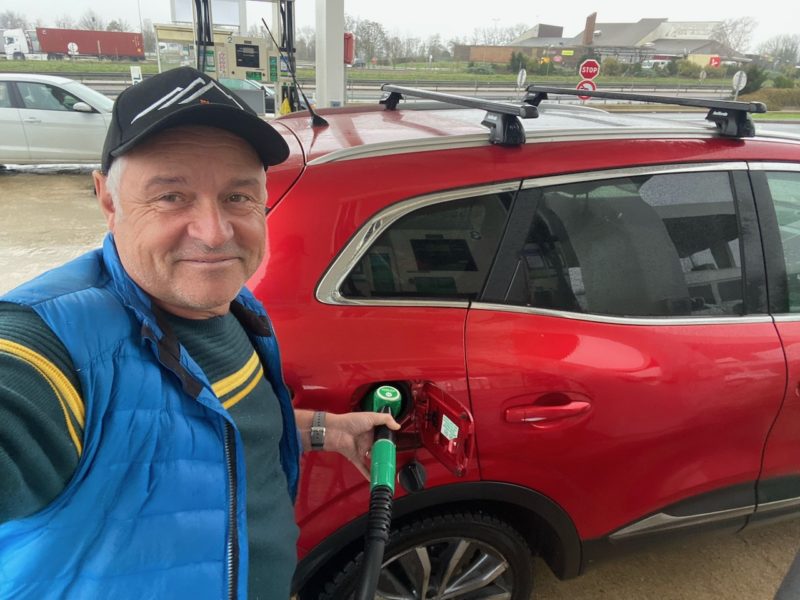
Driving to the Alps. Image © PlanetSKI
Your tank will likely not be that close to empty, but the next service station is 60 miles away past Troyes and the one after that another 40.
There is just one service station in 100 miles.
It is about the time when, if you leave England with a full tank it, will be running low.
The service station has electric charging points too for those more modern than me.
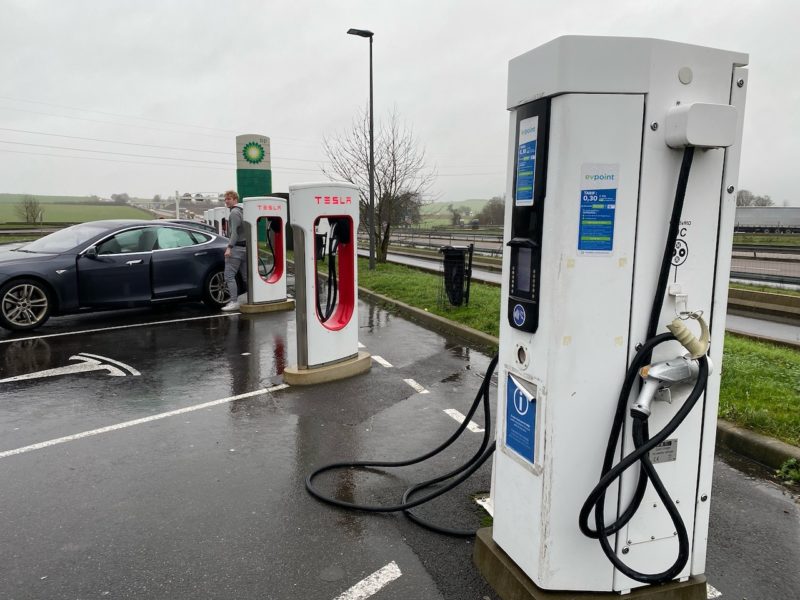
Driving to the Alps. Image © PlanetSKI.
Some ask me if the journey has changed much over the years.
It hasn’t.
The motorway connection has always been good, though back in the day you had to drive through the centre of Reims as the motorway bypass hadn’t been built and that added time to the journey
There are more wind farms, especially north of Troyes.
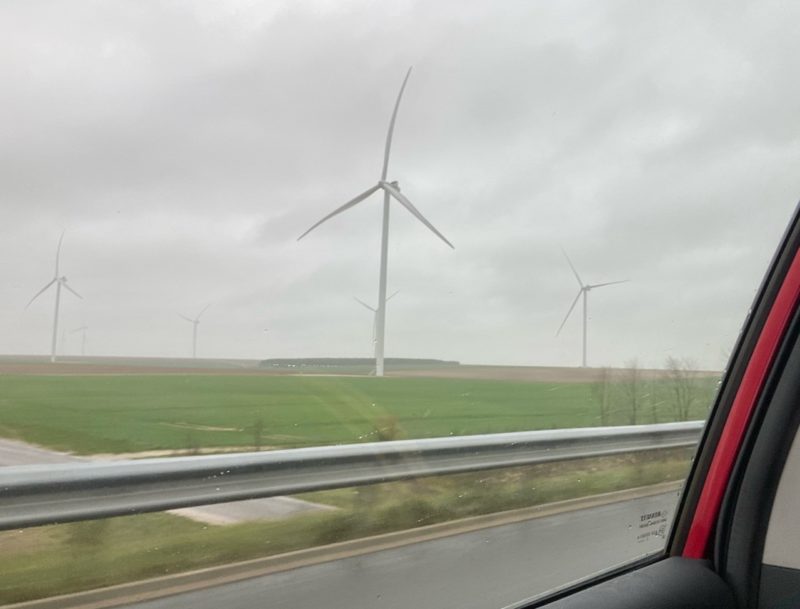
Driving to the Alps. Image © PlanetSKI
Oh, and the tolls are more expensive.
I spent €59.00 (£52.03) before stopping overnight in Poligny in the Jura mountains – more of the Jura later.
And there is the definite downside to driving solo to the Alps.
The Peage
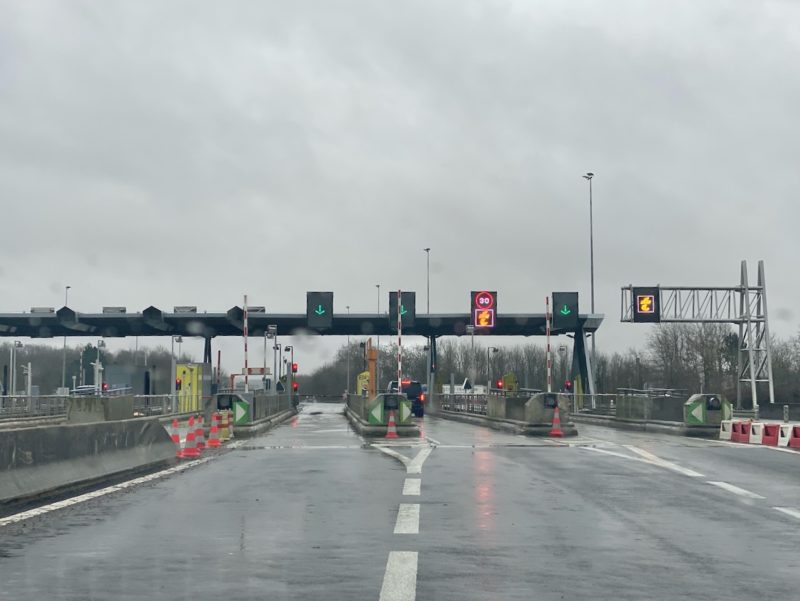
Driving to the Alps. Image © PlanetSKI
Not so much the price, but the practicality.
All machines are on the left and that requires some close parking, then acrobatics to reach across the passenger seat and out of the window.
If you have unusually long arms, then this is your moment.
I don’t.
So, I need to lie across the passenger seat with my head, shoulders and arms out of the window.
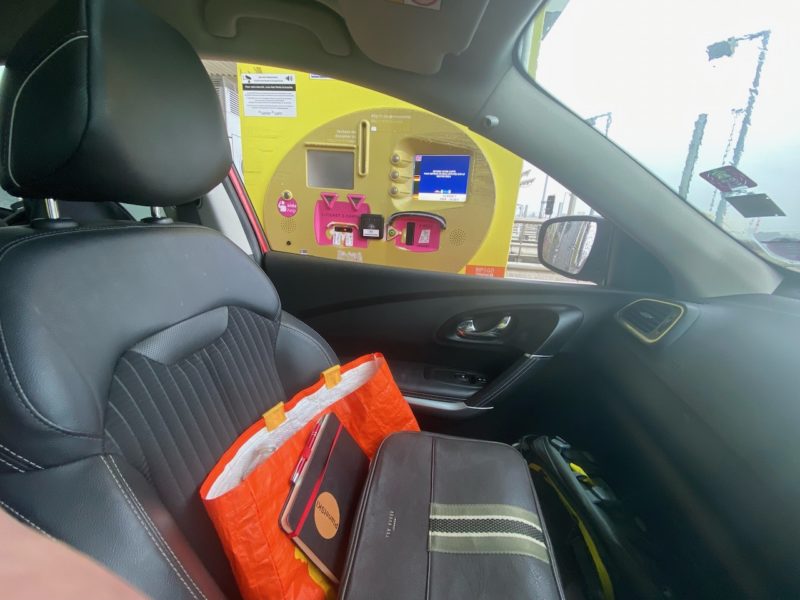
Driving to the Alps. Image © PlanetSKI
Petrol prices on the motorway are pretty much the same in the UK with the speed limit at 130 km/hr (80mph) and 110 km/hr in the rain (68mph).
Heading Across the Jura
“So, why go via the Jura mountains when you are heading to the Alps?” I hear you ask.
Simple.
It is the quickest way to where I am heading – Verbier in Switzerland.
It saves about an hour + there’s a saving on the tolls too.
Then of course there’s not having to climb halfway out of the car to pay the wretched things.
Once in the Jura I turn my Sat-Nav off, as I have the best route to get to Verbier thanks to my friend Annabel from Diva Ski.
She told me the route long before Sat Nav was invented and I have been taking it for years.
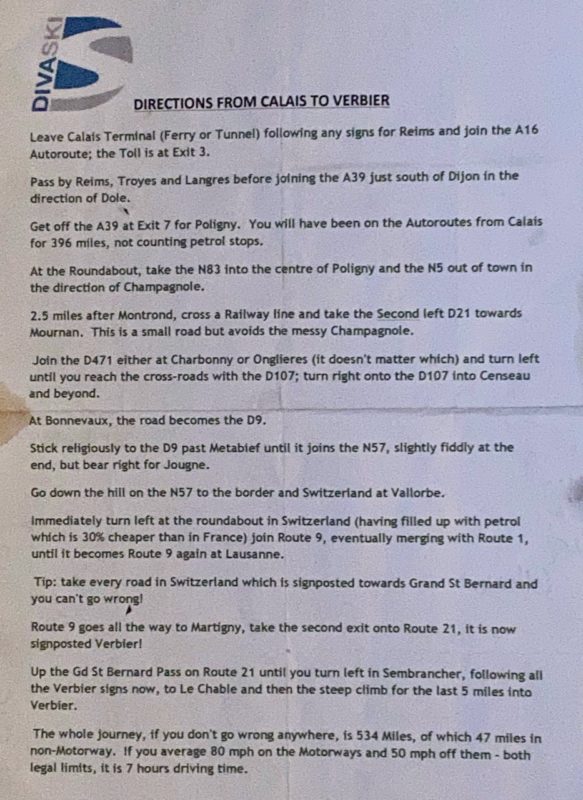
Driving to the Alps. Image © PlanetSKI
The Overnight Stop
Last season I drove to Aosta in Italy in one hit, and it took me over 12-hours from Calais.
This time I am having an overnight stop.
I could get to Verbier in a day – I have done it many times before.
But this time I wanted to stop at one of those gorgeous small French towns one usually drives straight through.
Step forward Poligny in the foothills of the Jura.
It was dark as I arrived shortly before 7pm.
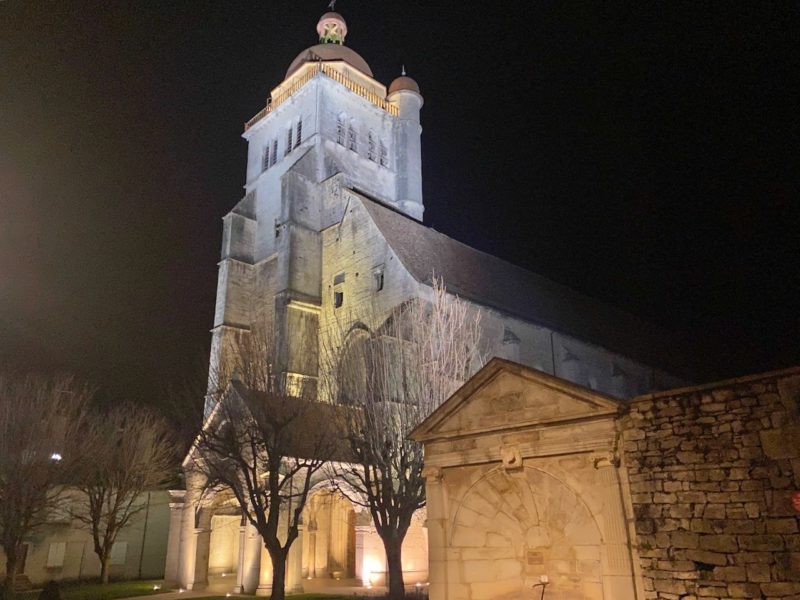
Driving to the Alps. Image © PlanetSKI
Dinner was in a 17th century cellar in La Sergenterie restuarant.
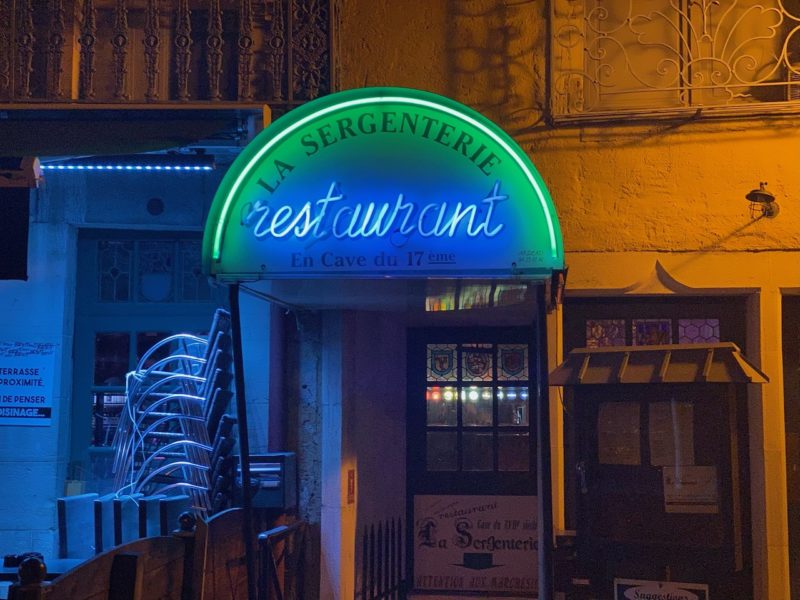
Driving to the Alps. Image © PlanetSKI
The three course €26 (£23) Regional Set Menu was a treat.
Tarte au Compte, Filets de Truite de Vin Jaune and Creme Brulee.
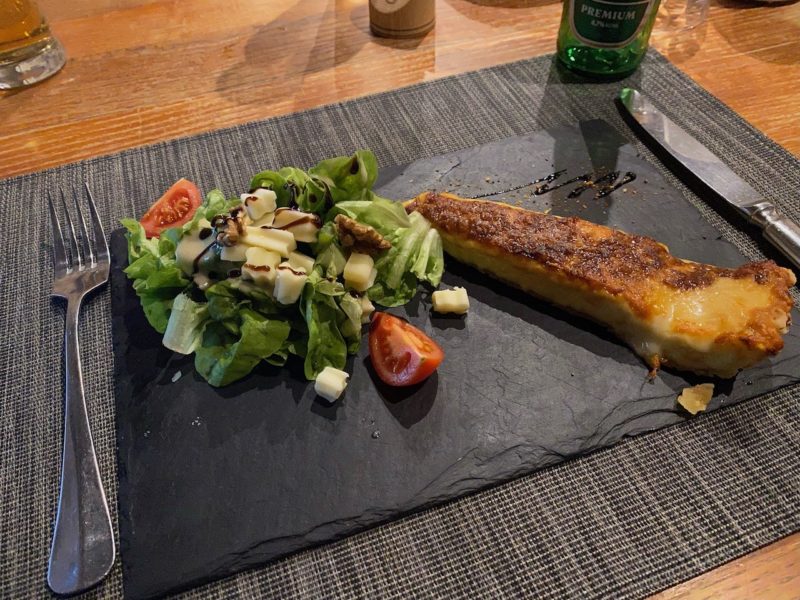
Driving to the Alps. Image © PlanetSKI
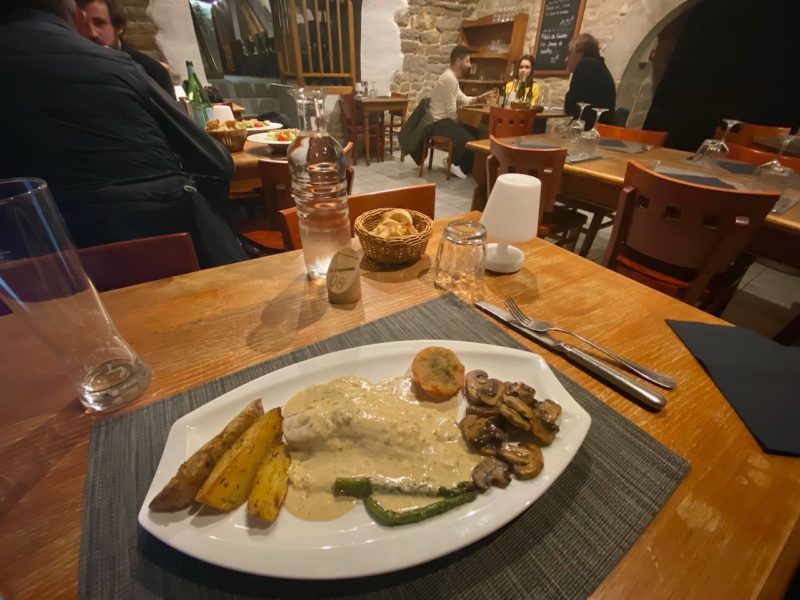
Driving to the Alps. Image © PlanetSKI
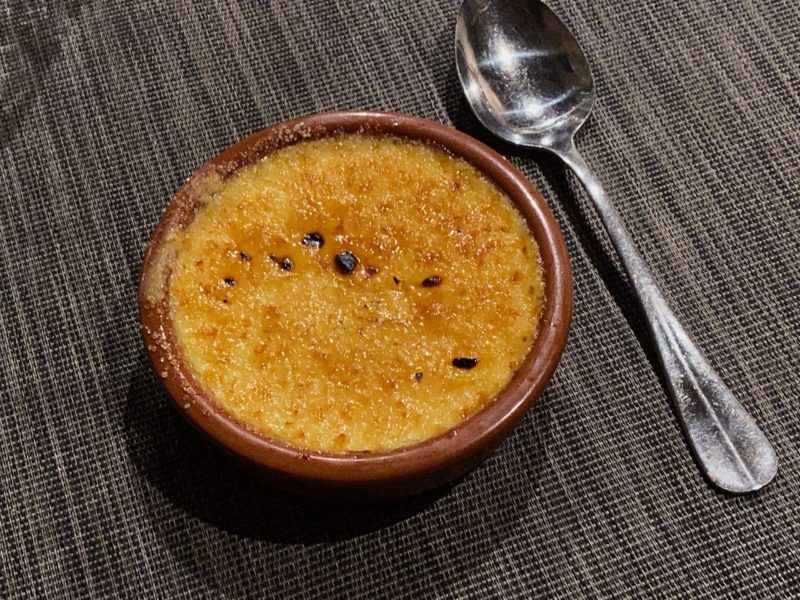
Driving to the Alps. Image © PlanetSKI
The overnight stop was a little B&B I know in Poligny, De Passage Chez Lili .
It is a converted monastery with a characterful outside, perhaps belying its tasteful interior.
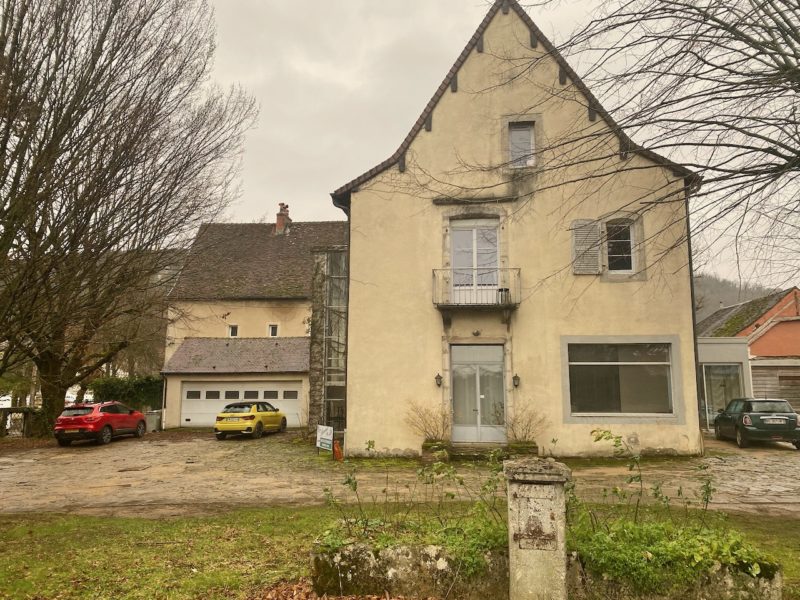
Driving to the Alps. Image © PlanetSKI
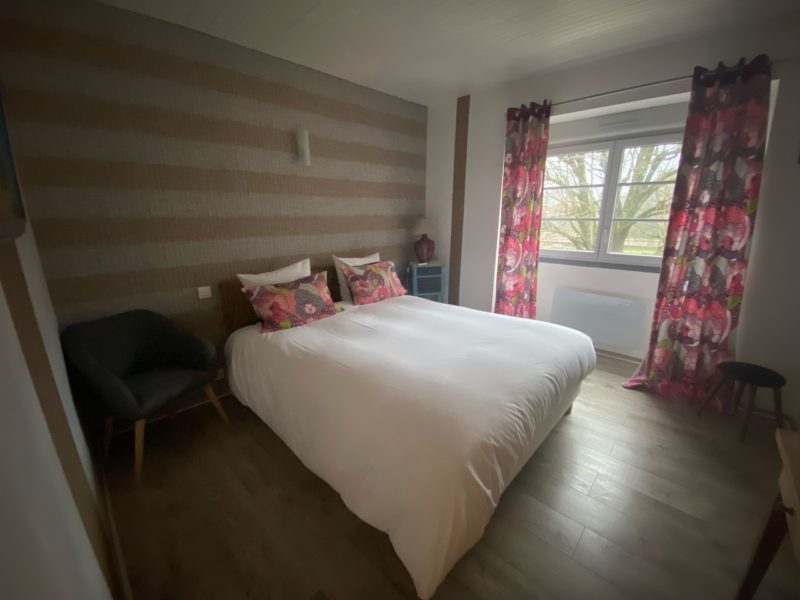
Driving to the Alps. Image © PlanetSKI
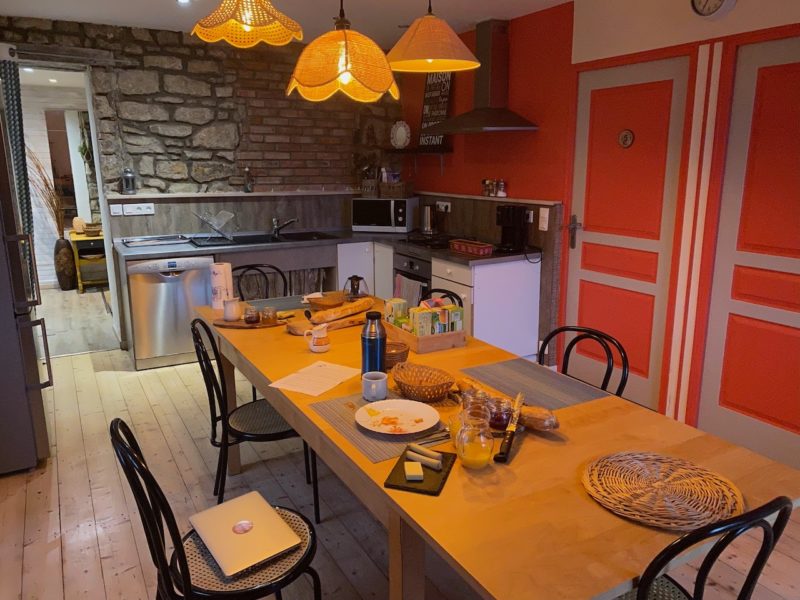
Driving to the Alps. Image © PlanetSKI
€65 (£57) per night gets you a twin room with breakfast included.
If I hadn’t been driving solo the price would have been half that per person.
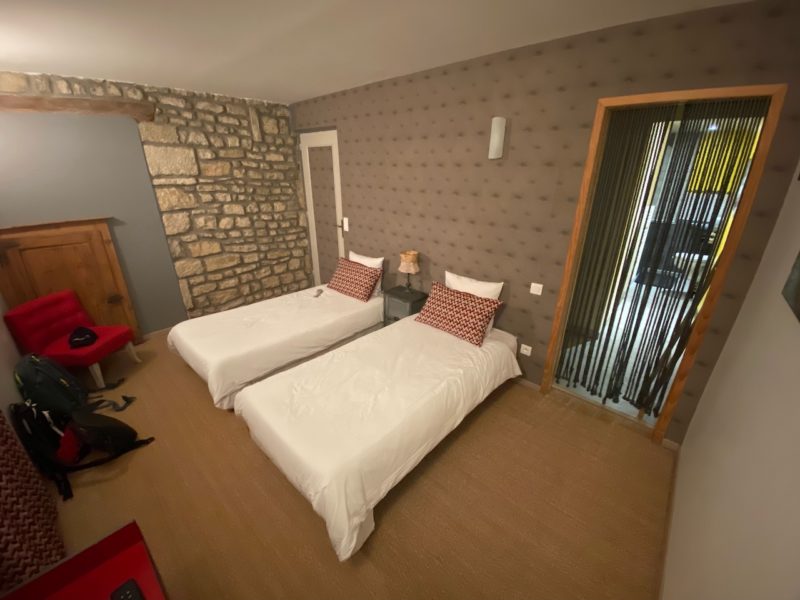
Driving to the Alps. Image © PlanetSKI
An Overnight Stop Can be the Same as Taking Luggage + Skis on a Plane
It is often said the overnight stop can make driving uneconomical.
Not so.
My stay with dinner cost me £80.
If I had been sharing with a fellow passenger it would have been £50 per person,
The cost of taking a 23kg bag one-way on an easyJet flight to Geneva is £33.74.
The one-way cost for skis and boots is a further £37, taking the total to £70.
I know how I would rather spend my money.
The Town of Poligny
The next day a stroll round the historic town of Poligny.

Driving to the Alps. Image © PlanetSKI
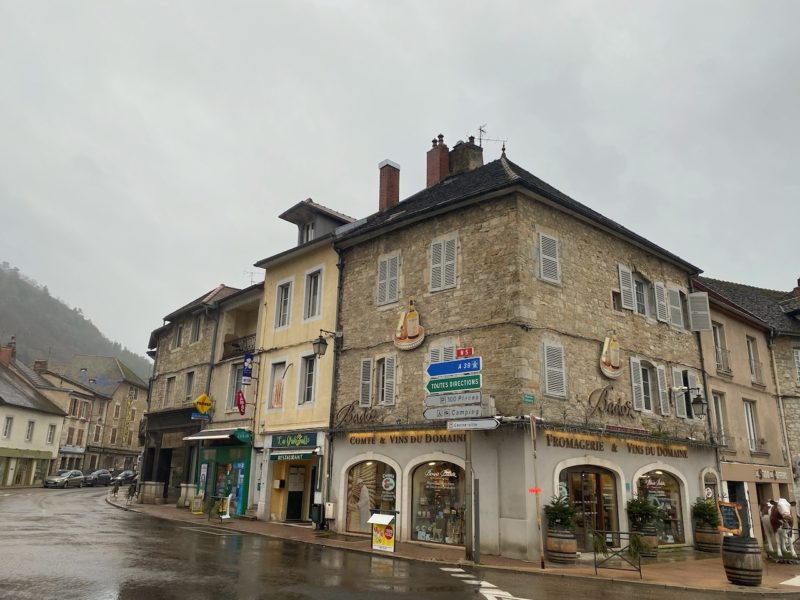
Driving to the Alps. Image © PlanetSKI
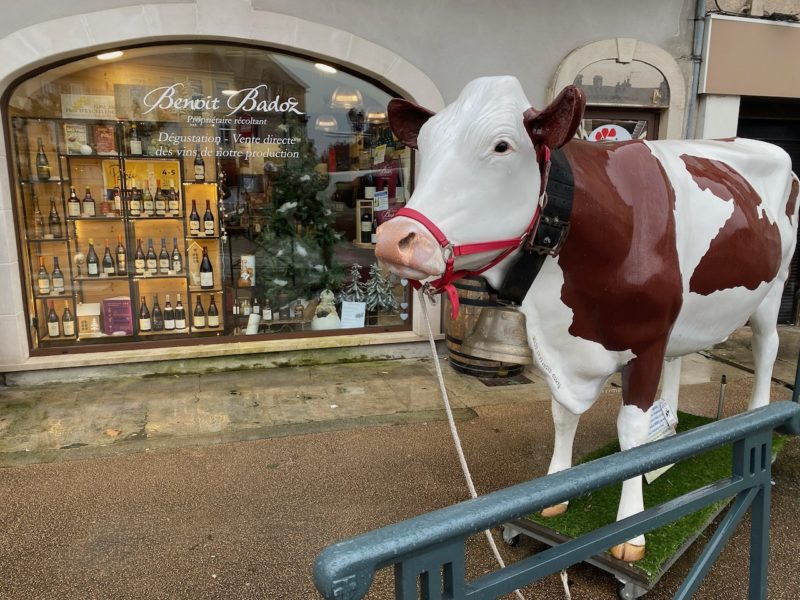
Driving to the Alps. Image © PlanetSKI
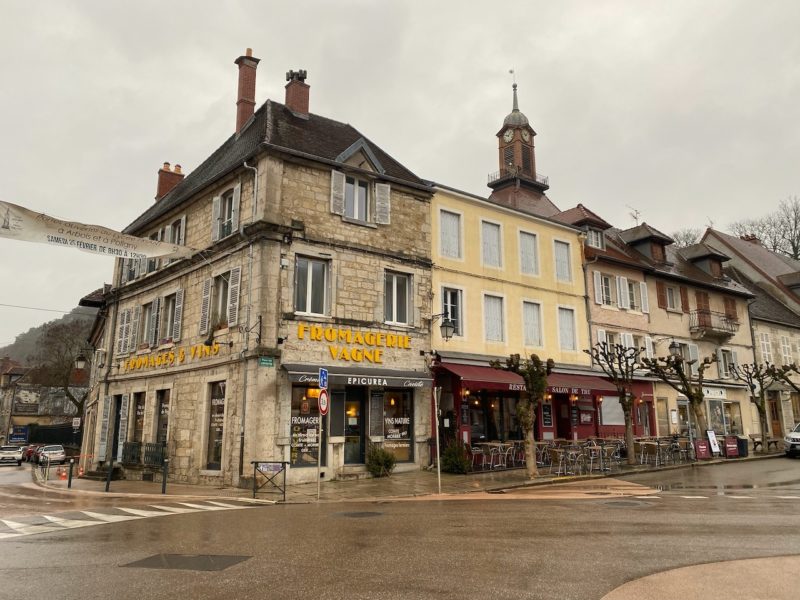
Driving to the Alps. Image © PlanetSKI
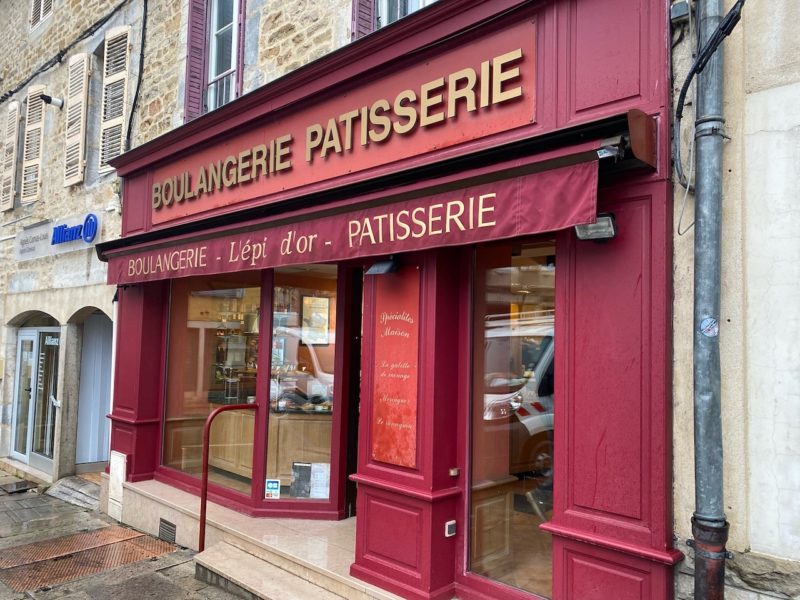
Driving to the Alps. Image © PlanetSKI
Driving Over the Jura into the Alps
Then the scenic drive over the Jura – it seemed an eternity away from the tedious time yesterday clocking up the miles in northern France.
My overnight stay in Poligny had completely refreshed me.
I was in no rush to arrive and I had that very rare commodity – time.
Oh, and some empty D roads and a spot of snow.
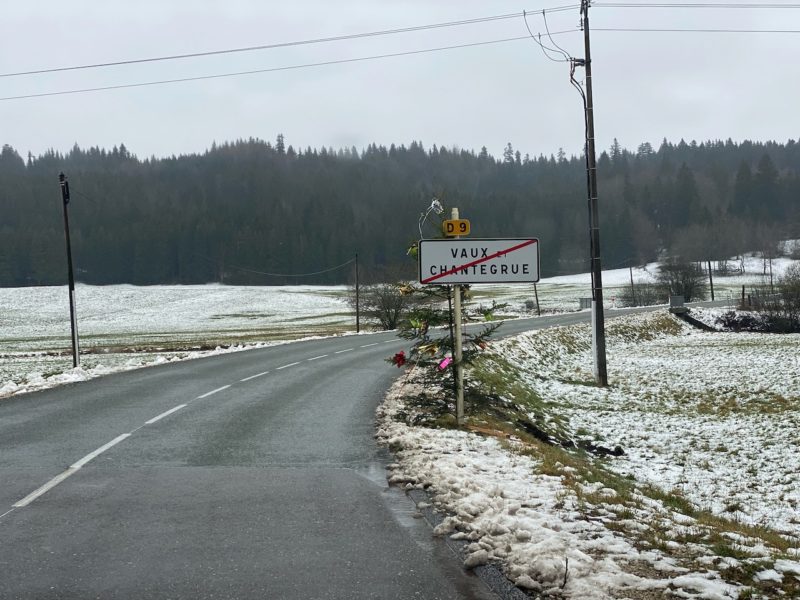
Driving to the Alps. Image © PlanetSKI
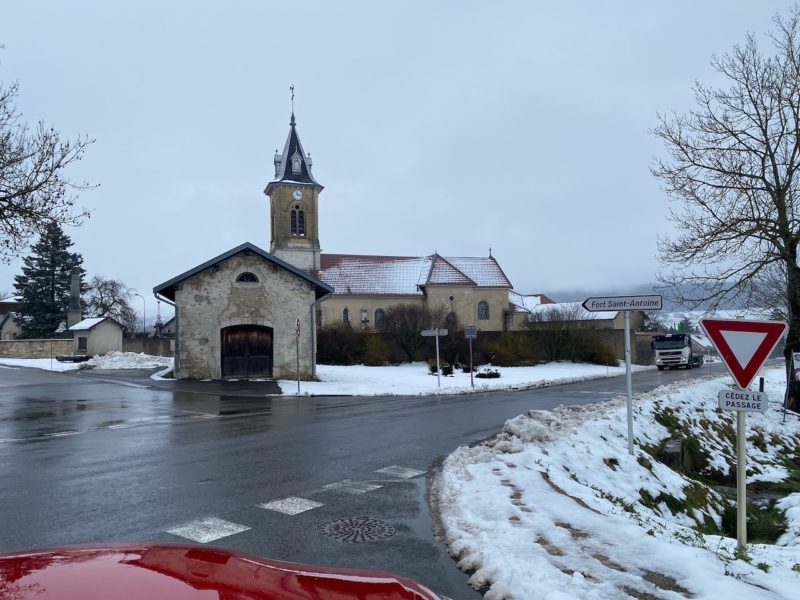
Driving to the Alps. Image © PlanetSKI
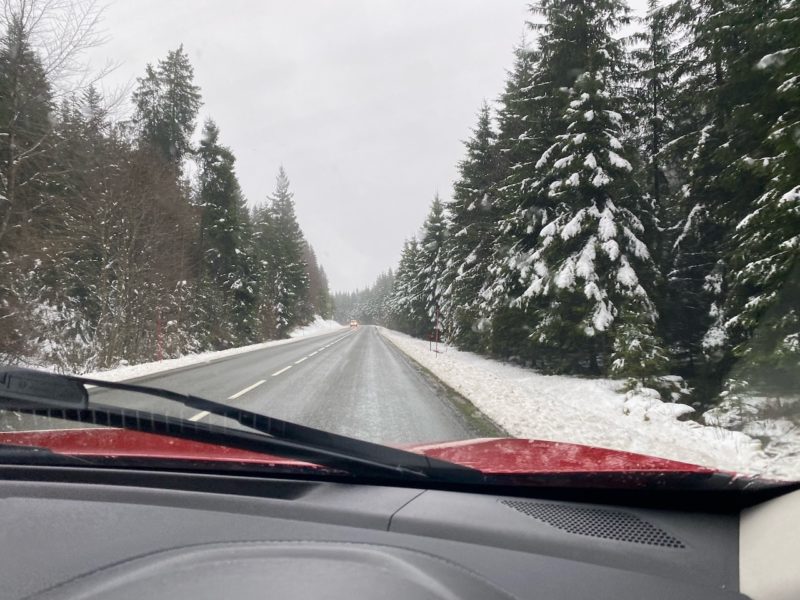
Driving to the Alps. Image © PlanetSKI
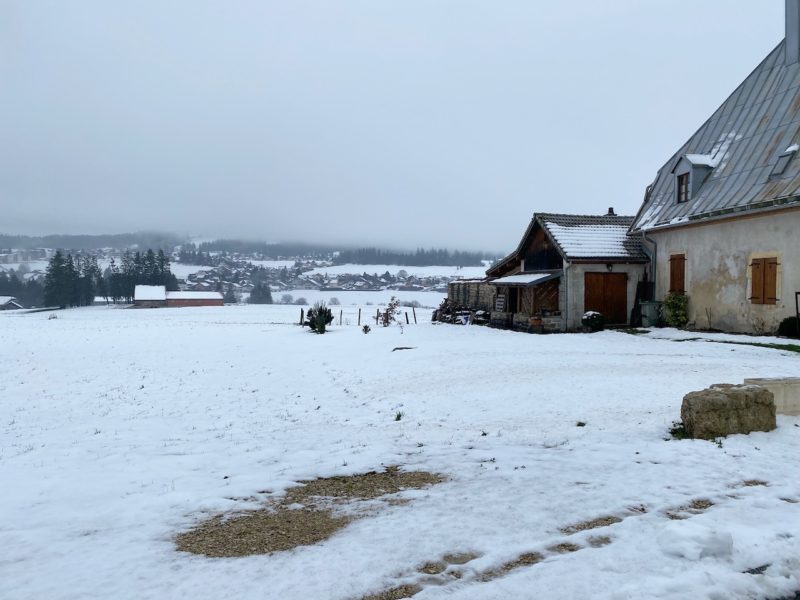
Driving to the Alps. Image © PlanetSKI
Sadly the little Jura resort of Jougne had some snow, but not enough to open.
It has been a poor winter so far and much of the recent snow in the mountains has fallen as rain here in the Jura.
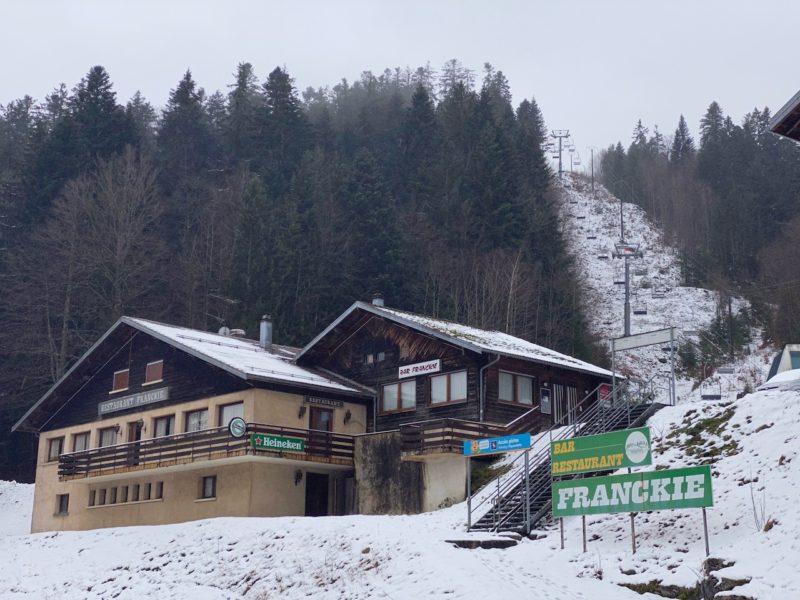
Driving to the Alps. Image © PlanetSKI
Over the French-Swiss border and down to Lake Geneva – or rather Lac Leman to give it its correct name.
The Alps across the water overlooking Montreux looked inviting.
I am told there is powder snow falling up top.
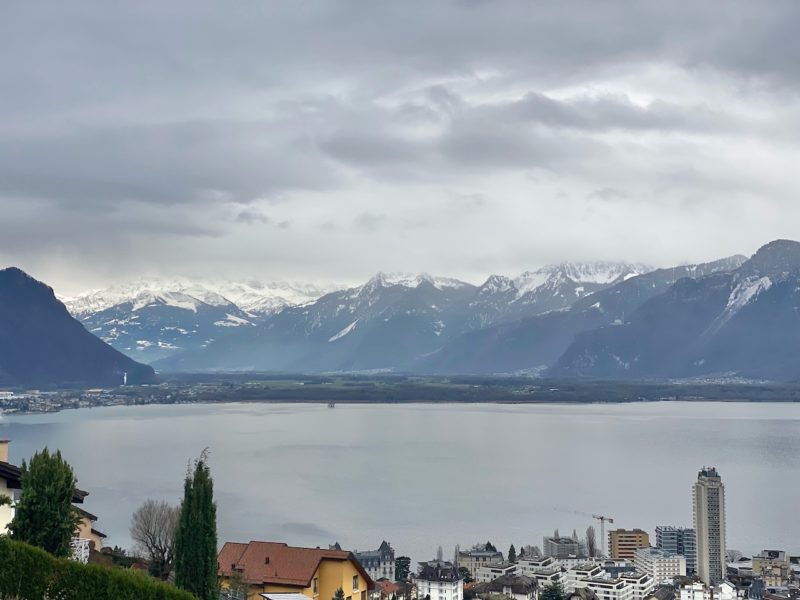
Driving to the Alps. Image © PlanetSKI
By the time I arrived in Le Chable in the valley beneath Verbier I could think of no better way of arriving.
“Why are you staying in Le Chable rather than Verbier?” I hear you ask.
I thought I would try something different and I fancy focusing on La Chable and its local ski area of Bruson.
I also stayed in Le Chable when doing multiple visits with the kids back in the day – by car of course.
And back in the day I have slept on many a sofa as this was where many of the Verbier ski bums lived.
Do check back over the next few days to see what I come up with on the first section of this alpine road trip.
It’s got off to a more than decent start and yesterday seems an age ago.
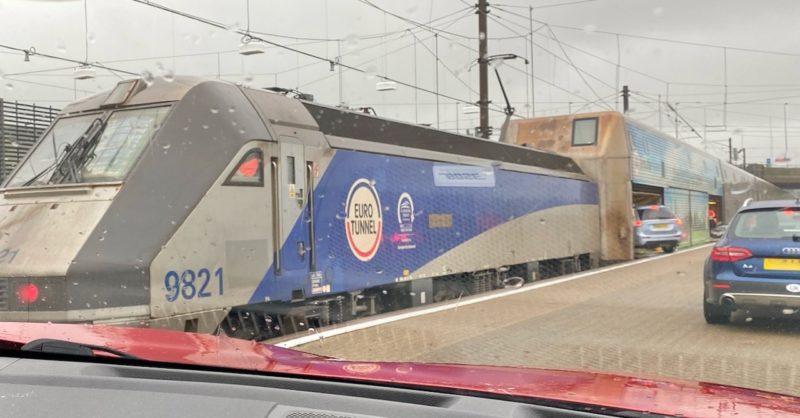
Driving to the Alps. Image © PlanetSKI
The UK ski operator, SNO, has hundreds of packages, which include either Le Shuttle or the ferry for your car.
If you want to know from Eurotunnel about why it thinks skiers and snowboarders should opt for a crossing and drive to the Alps then here are its reasons:
Head ‘off-piste’
Enjoy all that France has to offer on your way to or from the slopes. Maybe stop overnight in one of the wine regions and fill your boot with supplies. Or stop to enjoy one of Europe’s many beautiful towns, cities and nature parks.
Flexibility
Taking your car makes it easy to transport your ski gear to and from the slopes, or even change resorts if the snow conditions aren’t great.
No airport transfers
Airport transfers to hotels or resorts can involve waiting on other passengers, baggage issues and other delays, and can involve quite a long trip on a coach. Driving yourself means you can get straight to your accommodation and choose your travel times.
Save money
The cost of flights and car hire has significantly increased since the pandemic, making Eurotunnel a much cheaper way to travel to Europe, particularly for groups and families. If you have multiple people in your car it’s likely to work out cheaper than flights.
More room for ski gear
Taking a car allows skiers to pack in more than the amount aircraft baggage allowance permits, which is perfect for those who don’t fancy travelling lightly. Another luggage perk is that you also avoid the airline fees that come with taking additional items like snowboards and skis. Take advantage of tax free shopping too and stock up on the way home.
Family friendly
Driving to a ski resort is great for families. You can stop frequently at service stations and laybys to let the children stretch their legs, and the constant change of scenery can help to keep them occupied. The family car is also a more familiar environment than an airplane, so they’ll find it easier to relax and nod off.
Reduce your carbon footprint
If your car is full of passengers, your carbon emissions will be reduced by up to 67% compared to flying – even less if your car is electric. Eurotunnel Le Shuttle produces on average 2kg of CO2 per car per crossing, compared to 147kg of CO2 for a typical Dover-Calais ferry. That’s 73x less!
Ski Resort Drive Times from Calais
- Le Grand Bornard & La Clusaz (7h35)
- Saint Gervais (7h45)
- Chamonix (7h45)
Book your trip with Eurotunnel Le Shuttle from as little as:
£83 per vehicle (up to 9 passengers) each way for a Short Stay Saver ticket (valid for 5 calendar days)
£104 per vehicle (up to 9 passengers) for a Standard ticket (for any duration). One way
£269 per vehicle (up to 9 passengers) for a Flexiplus ticket, turn up any time and get on the next available train, and access to the club lounge (for any duration). One way.
Take your pet from just £22 each way.
For more information please visit www.eurotunnel.com
Update:
And guess who was one of the first people I bumped into as I headed to my favourite water hole, the Fer au Cheval, on arrival?
Annabel.
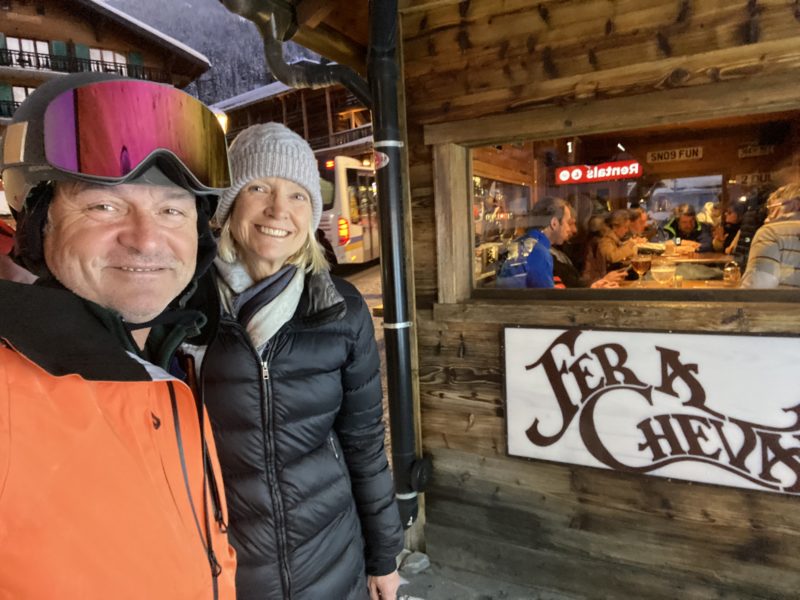
Verbier, Switzerland. Image c/o PlanetSKI
Yes, THAT Annabel – the lady who has provided my road route to Verbier for all this time.
And as promised – some reaction from readers on the PlanetSKI Facebook page….
Reaction from PlanetSKI Readers:
Martina Diez-Routh – We always drive, like six times per year to Aosta. We can do it in one day, but we stop in Chaumont at the Ibis Styles Chaumont Centre Gare with amazing beds and great breakfast and then coming back in Troyes.
We went through Grand St Bernard some times, in summer bc the Mont Blanc Tunnel queues were awful, and in the fall, bc the Mont Blanc Tunnel was closed, so through Poligny that is lovely.
Will save the instructions you put online James, as our satnav goes crazy and we lose the signal so it is by using a compass we get out of all those D roads- lovely seeing those small resorts in the Jura, but I doubt they had any good season in the last years!
Mike Bealing – If only Eurotunnel could run an efficient service and at a price equal to the ferries ….
Nick Davies – Reality bites that the cost of driving to the Alps has almost doubled in last couple of years
Steve Bloxham – Drive to airport and pay a thousand pounds to park. Herded like sheep at the airport at stupid o clock in the morning, crammed like cattle (actually cattle are given more space) onto a crappy airplane with a luggage allowance equivalent to a small wash bag to arrive at stupid o clock at a horrible airport, disembark for more herding and then find you wash bag size luggage is in Bangkok, then it’s back to the sheep herding onto a coach to sit for hours waiting for the late flight, drive for hours and then stop at every hotel in the resort. Luggage arrives with 3 hours of your holiday left.
Then repeat the process in reverse.
Think I’ll drive!
Tracey Hill – Always drive, our village is 8hrs from Calais so early ferry, breakfast on board to start the journey and can be in our apartment in the northern Alps by 6pm…then off to the local for a tarteflette and a beer.
Suzy Broadhead – Plus you can take the dog if you drive. Magnus is looking forward to his 8th ski trip next month.
Helen Jane Lees – We have done this a number of times . It’s not easy easy but I now prefer it to flying with four kids…we have a bip and go and these are a game changer.
Tunnel rather than ferry and a cheap overnight stop in a Novotel outside Reims (7pm tunnel crossing) made the journey really manageable . We got into Morzine at 4pm the next day. Yes it’s a long journey but also having our car in resort was a bit of a bonus too.
Chris Hutchison – Been driving for 13 years my Landcruiser knows the way by itself
Jonathan Miller-Cole – Will stick to a 1hr 50 flight to Innsbruck from Newcastle. The ferry to Holland from here alone is over £400 with a car, then fuel, motorway fee’s etc..
Claire Sutherland – One of the things that I love about going to a ski resorts is the less amount of cars in the villages compared. Is it really such a great thing promoting car use, especially in mountain environments? Train would be a much more sensible option to promote and it also doesn’t have luggage restrictions.
And if you have kids, it means everyone can be involved in the holiday spirit, instead of excluding the driver. We’re seeing more and more the effects of climate change on our mountains and we need to do everything we can to protect them or their won’t be anymore ski holidays to look forward to.
Ian Henson – Have always driven. One trip, it was so foggy that we were reliant on the nag nav to precisely tell us where the motorway junctions started! That was a long night! Normally, we would catch a midnight Eurotunnel, brim the tank at a truck stop on the outskirts of Calais, get the kids bedded down and drive, drive, drive. Breakfast in Albertville, skiing by lunchtime
Gareth Mainwaring – Clearly was not travelling Eurotunnel at a peak time. We’ve had to many bad experiences of cancelled & broke down trains (including in the tunnel once). we either take the over & stay in a hotel in Calais on the Friday night or if booked well advance Portsmouth – Caen / Le Havre overnight, then we are not rushing to get the kids/ wife from school and don’t have to brave the M25 (we are coming from Bristol).
Tim Hare – Wow may I suggest you get a motorway tag they are 10€ which avoid any problems and delays at the peage the great thing is they take the money 30 days later, having just driven to the alps which I have done a few times I am staggered that you haven’t thought of this.
Sue Dowden – Trains are a great way to travel, sometimes let down by the bus services between stations and mountain resorts, but almost as quick as flying when you take into account the faff of flying and the airport aggro.
It’s so disappointing the direct ski train from St. Pancras to Bourg St. Maurice is no longer an option for independent travellers who don’t want to buy a full package. That was a great choice, especially for solo travellers.
Driving can also be a great option with the amount of flexibility you get, the chance to enjoy a pleasant overnight stop en route and as much luggage as you can fit in the car. It’s well worth it for longer trips. We prefer Le Shuttle to the ferries. It’s always worked well for us, but sadly no longer cheap.
Flying is my least favourite option.
Neil Ferguson – First time doing so from West coast of Scotland.
With inflated prices for rental cars now in Switzerland and all the associated costs of airport car parking, flights etc.
Yes you have overnight accommodation but you can stop off in lovely places like Dijon en route to the 4 Valleys and drive through the Juras. On the whole cheaper and a lot more interesting if of course you have some time.
Peter Lock – We drive to Austria every year. It works for us as we are able to stay longer than just one week but it’s a long way and an overnight is essential for us. Oh and it helps to have a nice car!
Angie Wren – We have a house in the Jura mountains, always drive, DFDS UK Newhaven offer great deals..break our journey Kyriad hotel south of Paris, nice leisurely drive down through the #bourgogne #loveit
David Bateman – No brainer. Haven’t flown to Europe for years now.
Charlotte Reeves – We more often than not drive – have done to to Andorra Austria France and also done various trains to France
Prefer it to be honest (can load car up without weight allowance concerns! It’s long but as Helen says – good to have the car too.
Kate Blackwell – You can use Tesco vouchers on Eurotunnel so from south west wales to the portes du soleil it works out at around £400 for 5 of us. It’s a long drive but when you live several hours from an airport it’s actually easier.
Richard Shead – If you fly for work then the drive across is a welcome change. That does of course depend on where you live in the UK. I have shockers with flights, ferries and trains but mostly flights. Including the one with the 12 hour transfer from Geneva to La Plagne !
Mark Coomber – I have flown, taken trains, and driven to the French Alps on many occasions. And flying is my least favourite….well, not the flying bit but all of the faff at airports…only then still to be faced with a 4 hour coach transfer!
The train to Bourg St Maurice or Moutiers is great – I just wished they’d re-introduce the Friday night couchette trains.
My second favourite route is Euro-tunnel driving to outskirts of Lyon on the Saturday. Then up early to call at supermarche in Albertville for groceries, and onto the resort (3 valleys / Les Arcs / Val d’Isere ) arriving Sunday lunchtime.
Change in the car park, collect lift passes (and skis) when there’s no queues, and ski the afternoon. Check-in to apartment in the evening.
Return journey on the following Saturday: check-out of apartment, load up car, ski all day. Finish at 4pm, drive to Lyon, stay overnight, complete journey home on the Sunday.
This was we get 6.5 days skiing, no queues for skis/lift passes, and avoid the queues of traffic in/out of the resort on the Saturday evening and the following Saturday morning. All while still only taking 5 days off work.
Paddy Daly – PlanetSKI.eu I’ve got one and it’s such a boon. Don’t even have to stop these days, just slow down to 30 kph.
Feel free to add your comments if you have driven on the PlanetSKI Facebook page.

Driving to the Alps. Image © PlanetSKI
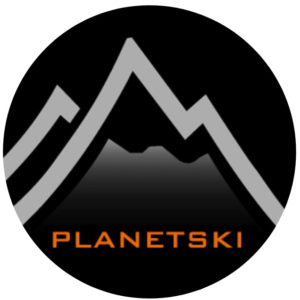
PlanetSKI logo

